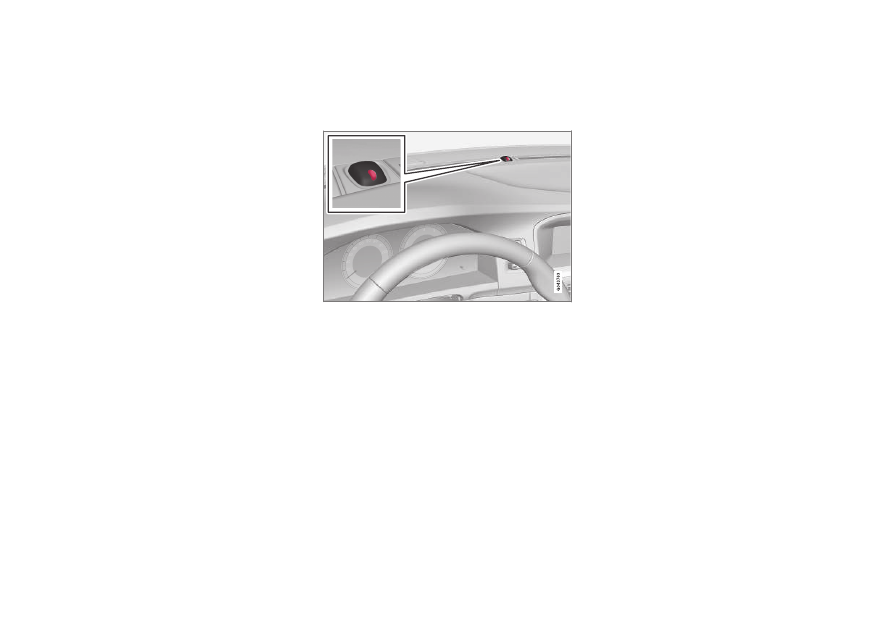Volvo V60 Twin Engine (2018 year). Instruction - part 11

||
LOCKS AND ALARM
* Option/accessory.
186
Deactivating a triggered alarm
–
Press the remote control key unlock button
or insert the remote control key in the igni-
tion switch.
Related information
•
•
* - automatic re-arming (p. 186)
•
* - remote control key not working
Alarm indicator*
The alarm indicator shows alarm system
(p. 185) status.
Same LED as lock indicator (p. 164).
A red LED on the instrument panel indicates the
alarm system's status:
•
LED not lit – Alarm not armed
•
The LED flashes once every other second –
Alarm is armed
•
The LED flashes rapidly after disarming the
alarm (and until the remote control key is
inserted in the ignition switch and key posi-
tion I is selected) – Alarm has been trig-
gered.
Alarm* - automatic re-arming
Automatic re-arming of the alarm (p. 185) pre-
vents the car being left with the alarm disarmed
unintentionally.
If the car is unlocked with the remote control key
(and the alarm is disarmed) but none of the
doors or the tailgate is opened within 2 minutes,
then the alarm is automatically re-armed. The car
is relocked at the same time.
Related information
•